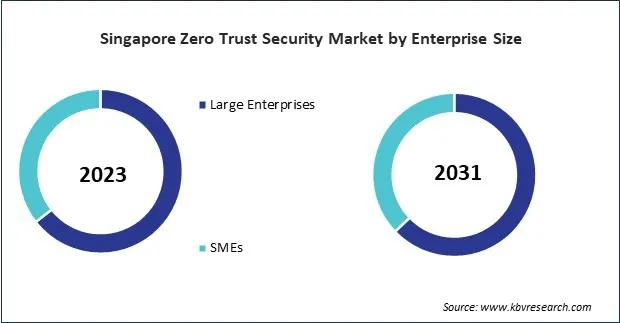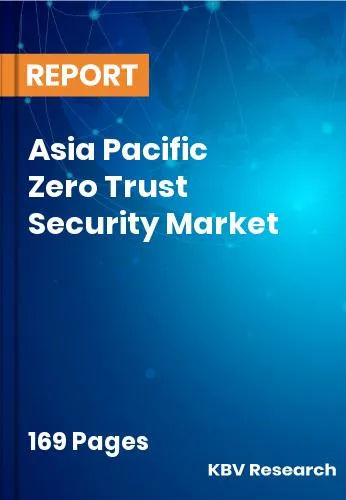The Asia Pacific Zero Trust Security Market would witness market growth of 17.0% CAGR during the forecast period (2024-2031).
The China market dominated the Asia Pacific Zero Trust Security Market by Country in 2023, and would continue to be a dominant market till 2031; thereby, achieving a market value of $8,137.3 million by 2031. The Japan market is registering a CAGR of 16.3% during (2024 - 2031). Additionally, The India market would showcase a CAGR of 17.8% during (2024 - 2031).

Zero trust security is widely used to enhance cybersecurity across various domains. Zero trust frameworks prioritize identity verification through MFA, biometric authentication, and risk-based access control. Organizations use Zero Trust to segment networks and limit lateral movement, reducing the spread of potential threats. Zero trust monitors endpoints such as laptops, mobile devices, and IoT devices to detect and respond to security threats.
The increasing number of IoT devices in industries like healthcare, manufacturing, and smart cities has led to adopting zero trust models to secure connected devices. Companies are replacing traditional VPNs with ZTNA solutions to provide secure, identity-based application access. Zero trust is being combined with secure access service edge (SASE) and integrated with security service edge (SSE) frameworks to provide comprehensive security solutions for enterprises.
The increasing adoption of digital technologies worldwide has driven the need for enhanced cybersecurity frameworks, leading to the growing prominence of the market. Two significant factors influencing this market’s growth are China’s booming software and IT services industry and Australia’s rising cybercrime incidents. China’s software and information technology services industry has witnessed remarkable growth, generating 12.33 trillion yuan (approximately 1.73 trillion U.S. dollars) in revenue in 2023, marking a 13.4% year-on-year increase. This represents a 2.2 percentage point increase in growth compared to 2022, highlighting the sector’s accelerating digital expansion. With businesses and individuals increasingly targeted by ransomware, phishing, and identity theft, zero trust security solutions can provide multi-factor authentication (MFA), network segmentation, and continuous monitoring to mitigate cyber risks. The Australian government has emphasized zero trust frameworks in its cybersecurity strategies, pushing businesses to implement strict access controls and endpoint security solutions to counter cyber threats. SMEs in Australia are particularly vulnerable to cyberattacks. Zero-trust security helps these businesses implement cost-effective, scalable security measures to protect their data, applications, and IT infrastructure. Thus, China’s booming software industry and Australia’s rising cybercrime rates are significant factors propelling the market forward.
Free Valuable Insights: The Global Zero Trust Security Market is Predict to reach USD 101.39 Billion by 2031, at a CAGR of 16.1%
Based on Authentication, the market is segmented into Single-factor, and Multi-factor. Based on Deployment, the market is segmented into Cloud, and On-Premises. Based on Enterprise Size, the market is segmented into Large Enterprises, and SMEs. Based on Type, the market is segmented into Network Security, Data Security, Endpoint Security, On-premises Security, and Other Type. Based on End Use, the market is segmented into BFSI, IT & Telecom, Retail, Healthcare, and Other End Use. Based on countries, the market is segmented into China, Japan, India, South Korea, Singapore, Malaysia, and Rest of Asia Pacific.

By Authentication
By Deployment
By Enterprise Size
By Type
By End Use
By Country
Our team of dedicated experts can provide you with attractive expansion opportunities for your business.

